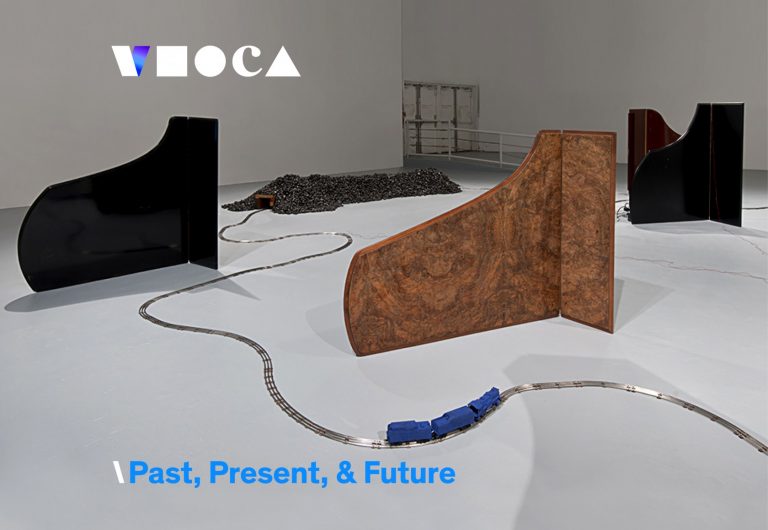COVID-19: How Galleries Accidentally Snapped When They Went Digital
Camille Wong
3/27/20204 min read


It seems like every day since the Los Angeles governor ordered a stay-at-home mandate in response to the pandemic, more and more galleries, museums, and art institutions are going digital offering virtual accessibility through social media and online platforms. The for-profit art fair tycoon Art Basel which would normally cost a steep price with flights, hotels, and entrance fees is now ~free~ through virtual viewing rooms. With the suspension of large gatherings in close quarters, many blue-chip galleries are also being forced to grapple with visibility by offering online exhibitions through their website.
It’s not just profit-hungry organizations staking a claim in the digital landscape. The print magazine Contemporary Art Review LA (Carla) is offering a pdf of their magazine for the next issue with reduced participation fees. MOCA’s debut of on March 23, will roll out virtual programs, events, and talks that would’ve otherwise been cancelled. By no means recent, but adding to the gestalt of this tech wave, passels of artists and graduating students are taking to Instagram Live and Stories to showcase cancelled exhibitions.
In response to self-isolation, many of these spaces have found themselves postponing anticipated events and openings that would normally generate revenue, sponsorship, and exposure. The struggle to stay relevant and maintain consistent viewership is now more important than ever in securing funding and remaining competitive. The foreboding digital landscape, once considered threatening to the authenticity of the art “artifact,” is now the last lifeline to an already “fusty, musty, and dusty”* institution. Perhaps it’s the very nature of the accessibility of information that challenges the white cube as a cultural institution. Afterall, a new means of media dissemination liberates the viewer from the stronghold of a broken institutionalized system. I run the risk of sounding trite, but truly, art spaces have always struggled to cater to a diverse audience that includes different age groups, education levels, and personal interests. However, the democracy of the internet, e-democracy if you will, is demonstrating the shifting times and the need for art spaces to reprioritize their audience.
The integration of digital technology in our daily lives makes it all the more important to offer extended accessibility. However, this has usually been the path of most resistance as the success of museums and galleries lies in the interactivity of the art object – afterall, how can you convince Squilliam Fancyson to purchase a pricey “Art” without experiencing it. To a traditional and dated museum model, the use of new media threatens the authenticity of the artifact and the sanctity of the art space. The line between education and entertainment is toed– perceived as a threat to elitist art spaces, who quake at the thought of becoming a -gulp- vanity “edutainment” museum.
By this I’m not just referring to art spaces having an online presence, because yes, it’s 2020, we know that having an Instagram account is integral to visibility. Nor am I referring to the incorporation of fancy tech gimmicks like mobile phone interaction or audio room sensory presentations (or whatever is the Dabbing Dad version of art and tech integration). And I am absolutely, not referring to these spaces showcasing new media artists, which again, is seriously lacking because of that still awkward exchange between money and the acquisition of nonmaterial objects. What I’m referring to is completely shifting the paradigm of these practices to reorient viewership– present art in a way that doesn’t cater to audiences who already know wtf they’re looking at. No doubt that most of these virtual viewing rooms aren’t for casual art hobbyists, but at least now I don’t have to fly to Miami to be stuck in a stuffy gallery with art liberalists.
This “unprecedented” time is really reshifting the power dynamics of the art space and its patrons, demonstrating that it is they who actually need us more than we need them. These are opportune times to create momentum for museums, galleries, and art institutions to offer more inclusivity and new pedagogical approaches. We know that these spaces depend on our patronage, so now more than ever is inclusivity important to the survival of these so-called cultural spaces.
Long after this quarantine lifts and “social distancing” becomes just another dated meme of the early decade, the question that remains is how do we democratize the art space. My best guess is digital inclusion, which aims to serve all corners of the world wide web irrespective of education, able-bodiedness, religion, race, gender, etc. Again, the key is access. Showcase artists and hire committees with diverse backgrounds and you will attract an audience that feels connected to not only the work, but the institution that decides to hear them. Yes, online programs and virtual viewing rooms are a step towards breaking down the physical barriers of an institution, but we need better than that.
* Quoted in Museums and Their Visitors, p.19
Camille Wong was born in Oakland, California and holds B.A.s in Art and Environmental Studies from the University of California, Santa Barbara. She is interested in understanding the human inclination to domesticate, colonize, and dominate. Her practice seeks to reconcile sustainability and environmental justice with our capitalist society.
Her work has been shown at the Art, Design, & Architecture Museum at the University of California, Santa Barbara, and she has exhibited her work throughout artist-run spaces in Los Angeles including Monte Vista Projects, Art Share LA, and Blueroof Studios. She received the Faculty Award of Distinction in 2017. In an effort to stimulate cultural discourse regarding underrepresented voices, she founded Cult Club, an online literary arts magazine dedicated to the intersection of arts and culture. She currently lives and works in Los Angeles.
